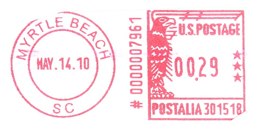
Are there any special safety issues to consider when planning to work with amphibian or reptilian cells?
Question:
We have a group at BioCurious that wants to print tissues using a bioprinter they have created - a machine that prints cells on a surface like an inkjet printer. They originally wanted to print mammalian tissue cells. We've decided not to allow this at BioC as we would want to treat such work as BSL2 and don't have those facilities (reason being there is no way to certify it is free of all human pathogens or that even if free the cell line would not become contaminated). I suggested to the group that they look at invertebrate cells, they said this was not suitable, but proposed using an amphibian or reptilian cell line. I can't think of why this wouldn't be safe, but as this is so far out of the work I have done I don't feel comfortable making that determination. Do you have any insight on if there are any safety considerations to working with amphibian or reptilian cells?
BioCurious is a community lab in the San Francisco bay area - you can find more about us at http://biocurious.org.
Answer from a Biosafety Officer:
January 28, 2013
Response from Biosafety Advisory:
Work with amphibian or reptilian cells can be conducted safely at BSL-1. While these types of cells are less likely than mammalian tissue cells to carry human pathogens, if the cells will be isolated in the laboratory, as opposed to being purchased from a vendor, the group should be aware that fungal and bacterial skin infections could occur from contact with reptiles or amphibians (Lewis et al. Clinical Infectious Diseases 2003; 37: 390-397). Good work practices such as wearing gloves when working with the cells, especially if group members have broken skin, and washing hands after working with the materials should be followed.
The group will want to devise a method to decontaminate their bioprinter after use with the cell lines. An effective disinfectant is a 1:10 dilution of Clorox bleach in water (1 part Clorox household bleach – not scented or splashless versions – to 9 parts water). The surfaces/items to be decontaminated should remain wet with the 1:10 dilution of bleach for at least 10 minutes to make sure that they have been properly disinfected. Depending upon the materials used to build the bioprinter, this bleach solution may cause corrosion of metal parts over time if the equipment is not thoroughly rinsed with water.



